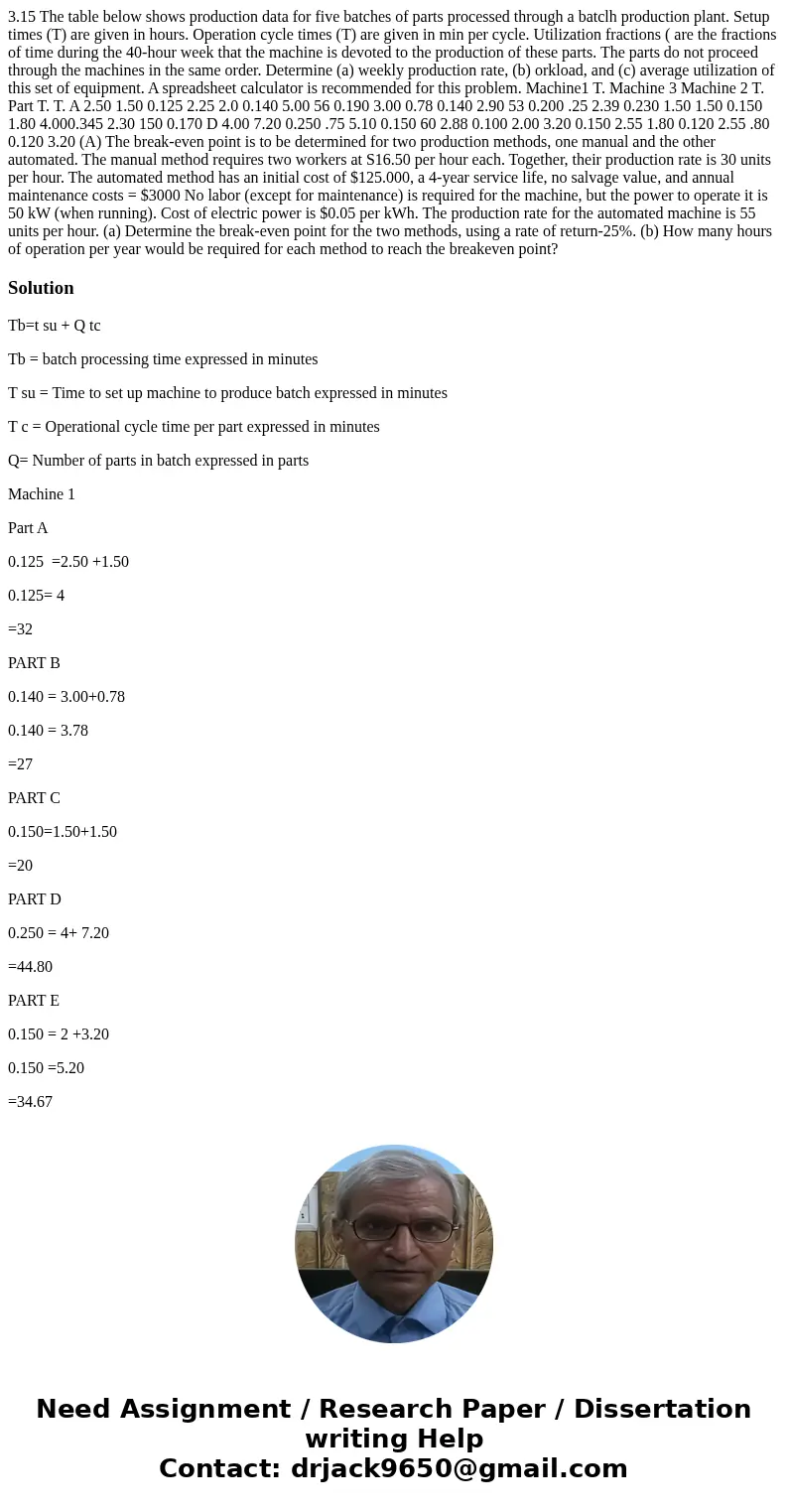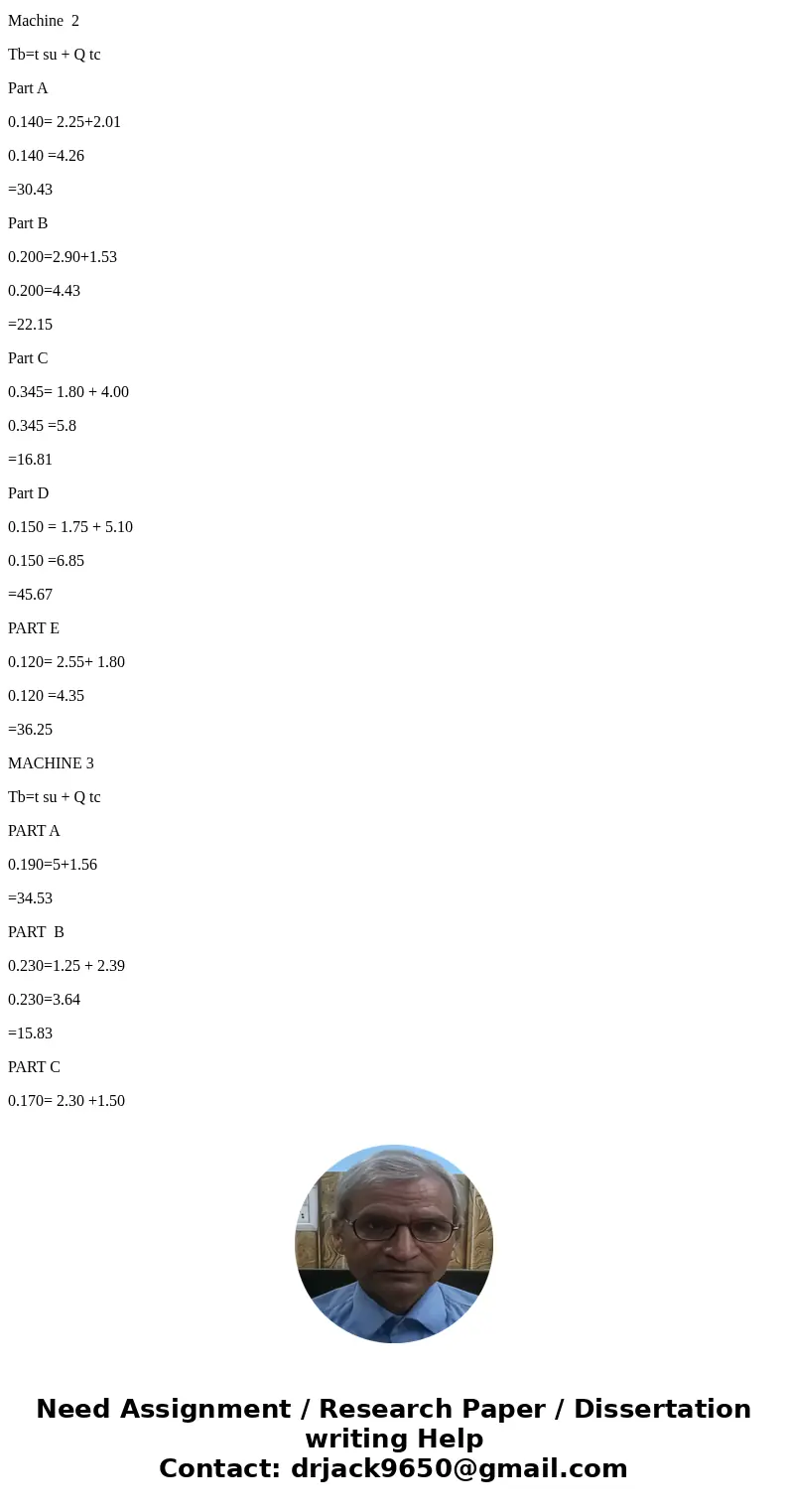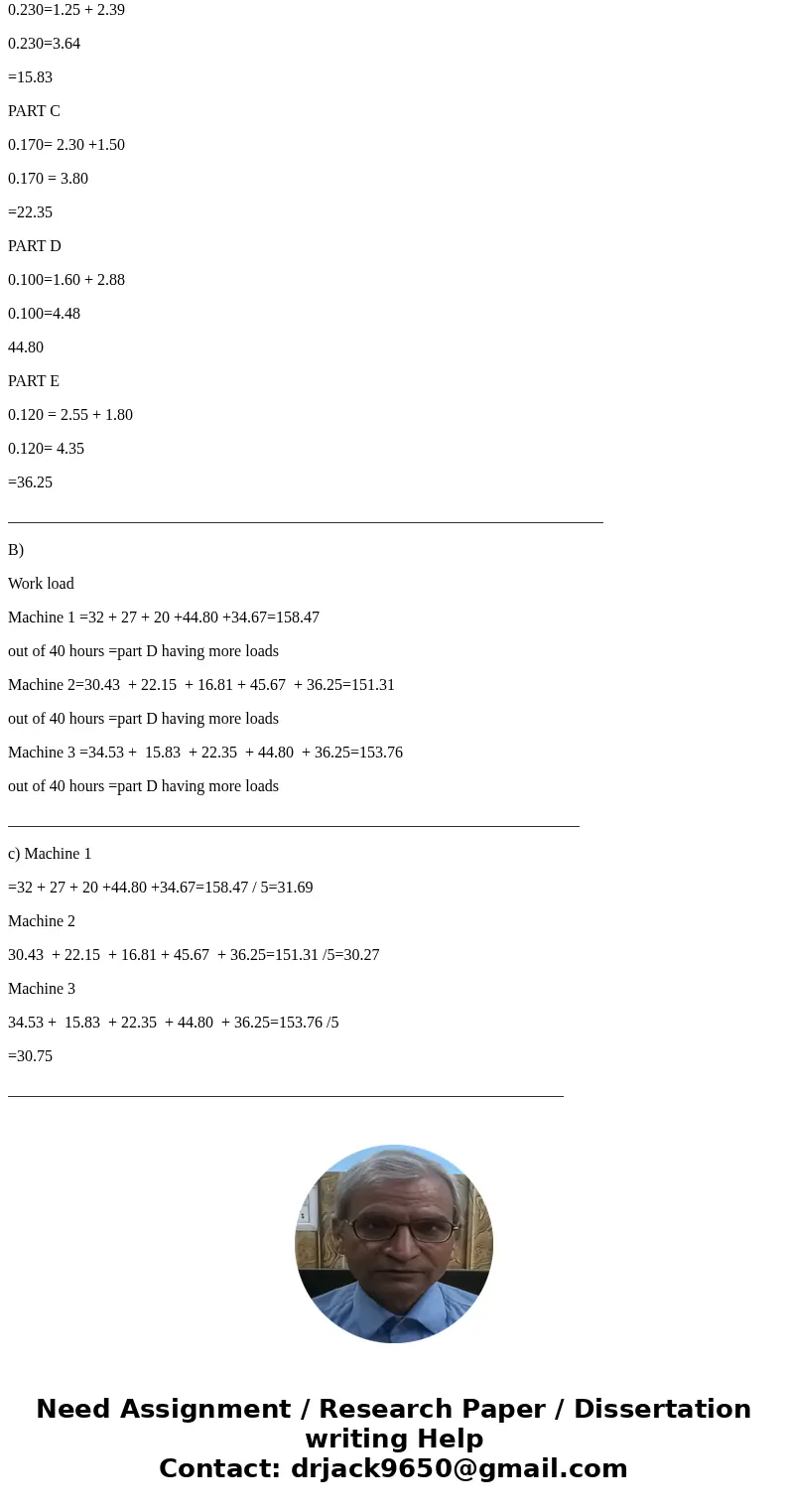315 The table below shows production data for five batches o
Solution
Tb=t su + Q tc
Tb = batch processing time expressed in minutes
T su = Time to set up machine to produce batch expressed in minutes
T c = Operational cycle time per part expressed in minutes
Q= Number of parts in batch expressed in parts
Machine 1
Part A
0.125 =2.50 +1.50
0.125= 4
=32
PART B
0.140 = 3.00+0.78
0.140 = 3.78
=27
PART C
0.150=1.50+1.50
=20
PART D
0.250 = 4+ 7.20
=44.80
PART E
0.150 = 2 +3.20
0.150 =5.20
=34.67
Machine 2
Tb=t su + Q tc
Part A
0.140= 2.25+2.01
0.140 =4.26
=30.43
Part B
0.200=2.90+1.53
0.200=4.43
=22.15
Part C
0.345= 1.80 + 4.00
0.345 =5.8
=16.81
Part D
0.150 = 1.75 + 5.10
0.150 =6.85
=45.67
PART E
0.120= 2.55+ 1.80
0.120 =4.35
=36.25
MACHINE 3
Tb=t su + Q tc
PART A
0.190=5+1.56
=34.53
PART B
0.230=1.25 + 2.39
0.230=3.64
=15.83
PART C
0.170= 2.30 +1.50
0.170 = 3.80
=22.35
PART D
0.100=1.60 + 2.88
0.100=4.48
44.80
PART E
0.120 = 2.55 + 1.80
0.120= 4.35
=36.25
___________________________________________________________________________
B)
Work load
Machine 1 =32 + 27 + 20 +44.80 +34.67=158.47
out of 40 hours =part D having more loads
Machine 2=30.43 + 22.15 + 16.81 + 45.67 + 36.25=151.31
out of 40 hours =part D having more loads
Machine 3 =34.53 + 15.83 + 22.35 + 44.80 + 36.25=153.76
out of 40 hours =part D having more loads
________________________________________________________________________
c) Machine 1
=32 + 27 + 20 +44.80 +34.67=158.47 / 5=31.69
Machine 2
30.43 + 22.15 + 16.81 + 45.67 + 36.25=151.31 /5=30.27
Machine 3
34.53 + 15.83 + 22.35 + 44.80 + 36.25=153.76 /5
=30.75
______________________________________________________________________



 Homework Sourse
Homework Sourse